Valgus deformation of the thumb of the foot is the most common orthopedic disease.Its main characteristic is the curvature of 1 Plusnephalanx joint.In the early stages, it manifests itself in the form of small growth near the thumb.The pathology has a slow development, so it is quite difficult to diagnose in the early stages.Valgus deformity is often combined with a disorder of the blood supply to the tissues, leading to the development of arthritis or arthrosis.In the absence of treatment in the joint of the thumb, an acute inflammatory process called bursitis occurs.
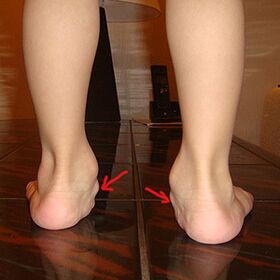
What contributes to the curvature of the finger?
The causes of Valgus deformation may be different, the main ones are considered:
- flat legs;
- Congenital pathologies of plusnoplange joint;
- muscle weakness that leads to pathological mobility of bone surfaces;
- leg injuries;
- Destruction of cartilage against the background of arthritis or arthrosis.
Wearing uncomfortable shoes to direct causes of the disease is not applied, but it can accelerate the development of the pathological process.Therefore, Khalus valgus is most common in women.There are other pathological reasons why the first toe can bend.Osteoporosis develops when calcium from bone tissue is extracted, which is why they become less thick.This leads to a change in the shape of the joint.Almost every person who has symptoms of Valgus deformity has one of 2 types of flat feet.Endocrine disorders contribute to reducing the power of relationships, which is why they cannot hold the joint in the correct position.The risk group includes women who are used to walking in high collection shoes.The provision of increased loads on the toes accelerates the process of curvature of the joint.Ballet dancers are forced to stand on socks for a long time, which can lead to deformation of the legs.So, Valgus's deformity is found only in 3% of people under 30, while each of the elderly per 5 people have a similar problem.This disease is most commonly found in patients whose parents have had pathologies of the musculoskeletal system.
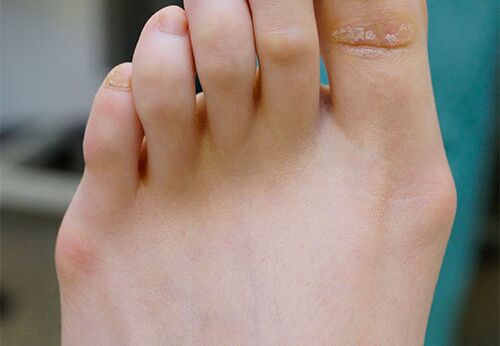
Clinical picture of the disease
The curvature of the thumb of the foot at the initial stages is quite difficult to notice.One notices that he becomes uncomfortable walking in the usual shoes.After a long stay in the upright position, pain syndrome occurs.Over time, the main sign of the pathology appears - the deviation of the first metatarsophalangeal joint to the second with the formation of the so -called cone.The remaining fingers take the form of fucking.The patient may experience chronic fatigue and difficulty in choosing shoes.Over time, calluses appear on the skin of the feet, bringing a lot of discomfort to a person.The most common signs of Valgus deformity are painful sensations associated with inflammation of the synovial membrane.A soft seal appears on the first finger.The skin of the affected area blushes and swells.Over time, bone corn is formed, irritating soft and cartilage.Severe pain occurs during walking.The mobility of the joint is limited, the pathological process can cover all the toes of the foot.
There are several degrees of deformation of Valgus, each of which has its own symptoms:
- Hallux Valgus of 1st degree is characterized by a curvature of the finger no more than 20 °.At the same time there is no pain.
- In the case of a disease of 2 degrees, the joint is displaced by 21-30 °.The unpleasant sensations are mild in nature, the mobility of the finger is not disturbed.
- With Valgus deformation of the 3rd degree, the angle of the curvature exceeds 30 °.The pain in the affected area is permanent.They prevent a person from wearing familiar shoes, walking and playing sports.
- At 4 stages of the disease, the joint is shifted by more than 50 °.The deformation of this degree is characterized by severe pain, difficulties with the choice of shoes, the formation of corn.
How to reveal this disease
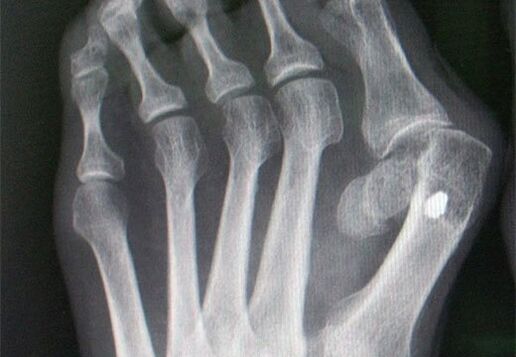
In order to make a preliminary diagnosis, a foot examination and history of history are performed.The doctor should:
- Evaluate the weight of the change of gait;
- The degree of joint curvature;
- the presence of corn;
- Bone cones.
The main therapeutic measures
The choice of a particular methodology depends on the degree of deformity of the joint and the severity of the pain syndrome.The most effective treatment of valgus deformation of the thumb of the foot is in its early stages.Therapy can be both conservative and surgical.In addition, the development of orthopedic shoes, which contributes to the proper distribution of load and prevents the appearance of calluses, helps to stop the development of the pathological process.To reduce the pressure on the affected area, special seizuresAnd seals.Due to the large number of side effects, these agents are not suitable for prolonged use.Drug therapy cannot completely save a person from deformation of valgus.With its help you can only eliminate the pain and signs of inflammation.Physiotherapy procedures - diatheria or ultrasound - are often used to treat the disease.However, these methods also carry only temporary relief.The most effective is the use of orthopedic devices that are made taking into account the individual characteristics of the foot.The use of adherents and fingers in the early stages of the disease prevents more joint deformity.With advanced forms of the disease, orthopedic devices allow you to make walking more comfortable.With the help of special insoles you can eliminate the root cause of the curvature - flat legs.Surgery is usually required for 3-4 degrees Valgus deformation when conservative treatment is ineffective.The choice of the method depends on the degree of weight of the deformation.With a slight shift of the finger, only bone growth is removed.To do this, a small incision is made in the affected area, after which the bump is cut and removed.
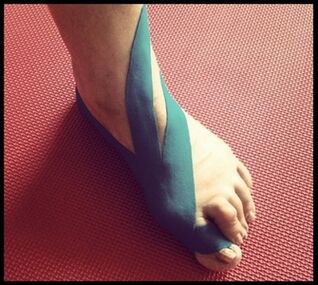
Distal osteotomy is aimed at reducing the corner of the curvature.The lower part of the bone is dissected and installed in the correct position.Proximal osteotomy implies the effect on the upper finger.During the work of Keller - Brandes, the joint of the thumb is completely removed, the rest of the synovial sheath is placed between the plus bone and the main phalanx.Surgical interventions are used in most cases of advanced forms of valgus deformity.The effectiveness of treatment depends to a large extent on the correctness of the implementation of rehabilitation measures.In the postoperative period, it is necessary to wear hard shoes or use special devices.You must use crutches to reduce the workload of the working leg.The shoes should have a wide finger and a low heel.It should be remembered that any surgery can lead to the development of complications.
The most dangerous are:
- Soft tissue infection;
- osteomyelitis;
- bleeding;
- displacement of bone fragments;
- delay in healing processes;
- Finger sensitivity loss.
More complications are avascular neurosis and post -traumatic arthritis.Preventing Valgus deformation is a constant visit to an orthopedist.Wear high -heeled shoes should give up.It is recommended to use orthopedic insoles.The long stay in a permanent position is prohibited.Valgus deformation is a very serious disease that can impair the quality of life of the patient, so treatment should begin in his early stages.
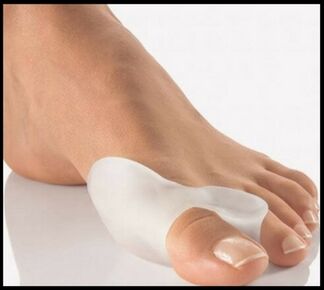
Halgus Valgus treatment without surgery
Excessive body weight, wearing uncomfortable shoes, leg trauma leads to the appearance of a painful, hyperemic convexity at the base of the thumb.It's called Hallux Valgus.What is Hallux Valgus?The designated term, literally decrypted as follows: Hallux is a thumb and valgus is curvature.The formed bulging is the medial part of the head of the first metatarsal bone.At the same time, it gradually deviates from other metatarsal bones, which visually increases in size.This disease is manifested by severe pain, it becomes impossible to wear ordinary shoes.The skin above the convexity is constantly rubbed, inflamed, in rare cases they bleed.With untimely circulation of medical care, significant deformity of all metatarsophalangeal joints arises.The first and second finger is crossed, other fingers can bend involuntarily until the extension becomes impossible.
The causes of the disease
To find out better what Valgus Khalus is, you need to know the causes and mechanism of the onset of this disease.It develops most often in women because their ligamentum is not as strong as in men.Such deformation does not develop independently, the effect of the following pathogenic factors is necessary for its manifestation:
- Increased body weight - in fat, there is an increase in the load in the area of the plus plus -phlanging, which leads to stretching of the ligamentary apparatus, which connects the metatarsal bones;
- Narrow, uncomfortable, pressing, high heels, shoes are the main trigger of this condition.Frequent wearing of shoes with narrow finger, also high heels, contributes to a constant change in the physiological position of the thumb, which is why it gradually deviates;
- Changes in hormonal origin, which often occur in people of fair sex, contribute to a change in the metabolism and trophism of the connective tissue, which leads to increased stretching of the tendons, disrupts their integrity;
- Traumatization - significant damage to the tendons of the muscles that perform leading and deviating functions, provokes the prevalence of the efforts of one of them, which is the reason for the deviation of the first metatarsal bone;
- Sugar Diabetes - leads to the development of a diabetic leg, which is characterized by impaired blood circulation and trophism of the muscles, tendons and ligaments, which makes it possible to manifest in deformation;
- Arthritis and arthrosis of the legs can lead to the development of chronic inflammatory focus, these diseases also stimulate the process of osteophyte growth, which can cause deformation of the affected joint;
- Pregnancy is a period of life of a woman when a complete hormonal restructuring occurs and the enlargement of the abdomen transfers the load to the anterior legs, which provokes the development of Halus Valgus.

Stages of Hallux Valgus
The severity of Halus Valgus is determined on the basis of the angle between the first metatarsal bone and the second, as well as the angle of diverting of the thumb from the first metatarsal bone.There are three stages of development of this disease:
- Hallux Valgus of 1st degree is characterized by minimal deviations that make up: the angle of the interjlated less than 12 degrees, and the diversion of the thumb does not exceed 25 degrees.At the same time, patients may not be completely absent in pathognomonic symptoms and visual changes are almost invisible.
- Khalus valgus 2 degrees - manifested by increasing the melting angle to 18 degrees, at that time the first finger is rejected more than 25 degrees.With this development of deformation, painful sensations occur, discomfort when wearing ordinary shoes.With excessive physical overvoltage, the pain intensifies.The convex part of the bone head of plus is rubbed constantly, hyperemic, swollen, indicating an inflammatory process.
- Hallux valgus 3 degrees is manifested by considerable curvature, the angle between the metatarsal bones exceeds 18 degrees, and the first and second finger intersects.On the inside, there is a significant bulge of red, painful when palpation.Wearing any shoes is impossible due to pain, patients are constantly limping, saving the affected limb.
Treatment tactics depend on the neglect of the pathological process.In the first stages you can make conservative methods using tires and other fixing devices.The next stage requires emergency surgery, without which the foot can be deformed, other unwanted complications will occur.
Methods of treating Hals Valgus
Before starting treatment, it is necessary to exclude the effects of pathological factors.First, you need to reduce body weight.For this, patients are advised to exercise, lead an active lifestyle.An important point is that when exercising exercise, it is forbidden to apply forces to the affected limb.The appointment of diet therapy is an important step in the treatment of Khalus valgus.A specialist may recommend an effective diet, but it must include products rich in vitamins and minerals that will help to improve the condition of the affected joint.
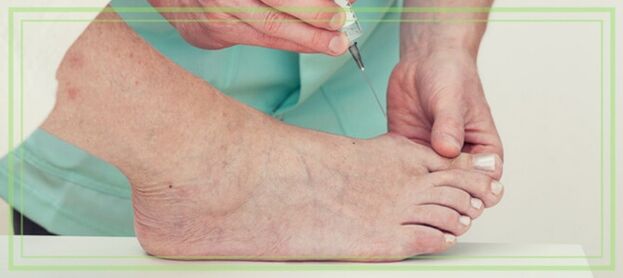
Orthopedic tires and retainers
They are used for the constant fixation of a deformed plus bone and a toe closer to the rest of the foot.You can use hard locks - tires that, when fixed on the foot, do not allow the toe to move.Such a device is used during sleep as well as with a long rest.You can resort to the use of silicone retainers.There are silicone retainers that are attached only to the thumb, as well as attach to all fingers.The main advantage of this development is the ability to walk in shoes in it.At the same time, the effective plus fixation of the bone continues, and the retainer itself is practically not felt when wearing.























